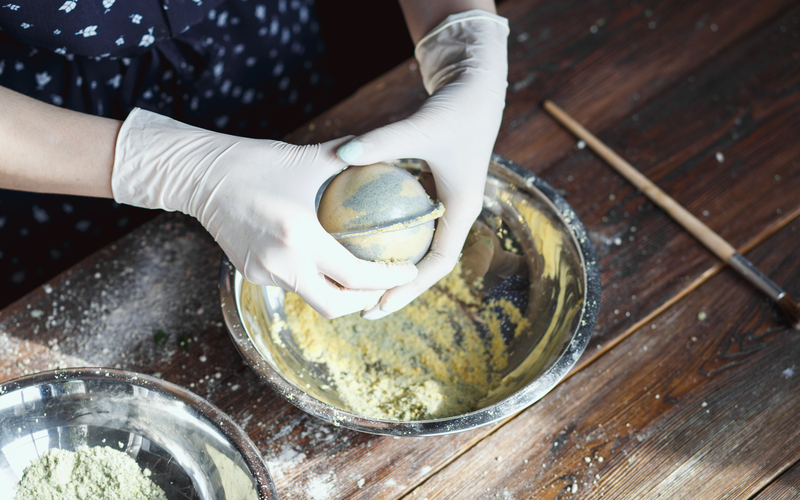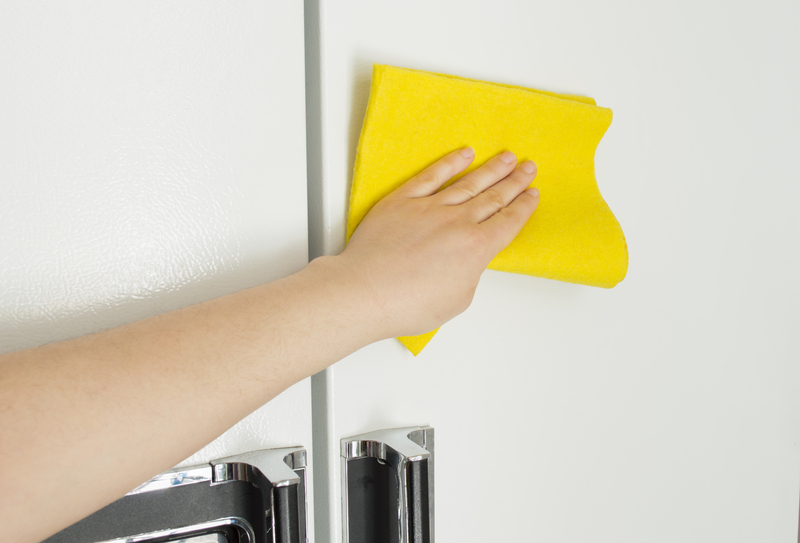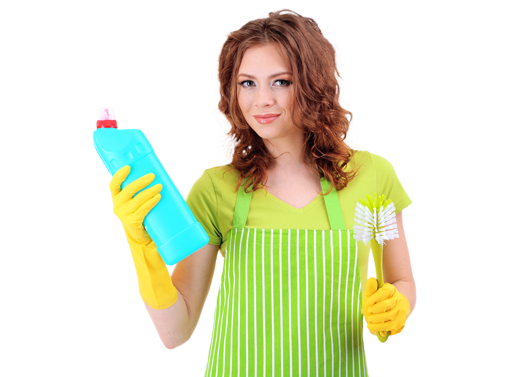Powerful Ways to Remove Stubborn Burnt Residue on Stovetops
Posted on 24/06/2025
Powerful Ways to Remove Stubborn Burnt Residue on Stovetops
A sparkling clean stovetop isn't just aesthetically pleasing; it's also more hygienic and functional. However, over time, it can accumulate tough, burnt-on residue that ordinary cleaning methods often can't tackle. If you're tired of scrubbing for hours with minimal results, read on. This comprehensive guide covers powerful ways to remove stubborn burnt residue on stovetops using proven techniques and products, ensuring your kitchen shines again without damaging your appliance.

Why Does Burnt Residue Build Up on Stovetops?
Before exploring burnt residue removal techniques, it's helpful to understand the culprits behind those stubborn stains. Common causes include:
- Spilled liquids that dry or caramelize on hot surfaces
- Boilovers from soups, sauces, or starchy foods
- Overflowed sugar-based syrups and desserts that harden under heat
- Neglecting daily wipe-downs after cooking
- Using the wrong cleaning products or tools that allow residue to build up over time
Different stovetop materials--like glass, ceramic, enamel, or stainless steel--require specific cleaning approaches. Let's investigate the best cleaning tips for all types of stovetops.
General Tips for Safe Stovetop Cleaning
No matter what method you use to eliminate burnt-on food from your stovetop, always start with these basic precautions:
- _Wait until the stovetop is completely cool before cleaning_
- _Unplug electric stovetops or ensure all controls are off_
- _Check the manufacturer's instructions for cleaning recommendations specific to your model_
- _Avoid abrasive pads or steel wool on delicate surfaces like glass or ceramic to prevent scratches_
- _Do a spot test in an inconspicuous area if using a new cleaning solution_
Powerful Cleaning Methods for Burnt Stovetop Residue
Baking Soda and Vinegar Miracle
_Baking soda_ is a kitchen staple renowned for its natural abrasiveness that loosens tough stains, while _white vinegar_ helps to dissolve mineral deposits and cut through grease. This combination works especially well on stubborn stovetop stains.
- Sprinkle a generous layer of baking soda over the burnt residue.
- Spray white vinegar onto the area. The mixture will fizz, which helps break down the burnt layer.
- Let it sit for 15-20 minutes--longer if needed for heavy build-up.
- Use a soft damp cloth or non-scratch sponge to gently scrub the residue. Repeat as needed.
- Wipe clean with water to remove any baking soda or vinegar remnants.
This method is safe for most stovetop finishes. For tougher stains, create a paste of baking soda and water and apply it directly to the residue for a more intensive treatment.
Commercial Stovetop Cleaners
When natural remedies fall short, there are several effective commercial stovetop cleaning products designed to tackle burnt-on food and grease. Look for cleaners labeled safe for your surface type--glass, ceramic, stainless steel, or enamel.
- Apply the cleaner following the manufacturer's instructions.
- Allow it to dwell on the stain for the recommended time to maximize its effectiveness.
- Use a soft pad or specialized scraper (often included with the cleaner) to gently lift the residue.
- Rinse and wipe down thoroughly to prevent streaks or residues.
Many of these products use mild abrasives or solvents to cut through burnt residue without scratching sensitive surfaces.
Razor Blade or Scraper Method for Glass and Ceramic Stovetops
For glass and ceramic stovetops, a razor blade or specialized stovetop scraper is often the fastest way to remove burnt-on gunk. Always use this technique with care:
- _Hold the blade at a low 45-degree angle to prevent scratching._
- _Gently scrape the residue, applying even pressure._
- _Wipe away loosened debris and inspect for any leftover spots._
Combine with baking soda paste or a commercial cleaner for best results. Never use a razor on textured or easily scratched surfaces.
Soaking and Steam Treatments
If your burnt stove residue is particularly thick or sticky, try soaking or steaming the area to soften the buildup before scrubbing:
- Lay a hot, wet towel over the burnt area for 20 minutes. The steam and heat will loosen the residue, making it easier to wipe away.
- For enamel or metal burners, place removable parts in boiling water with dish soap for 15-30 minutes before scrubbing with a non-abrasive sponge.
_This gentle method is especially useful for caked-on food that resists traditional cleaning._
Lemon Juice Solution
_Lemon juice's natural acidity makes it an excellent cleaner for removing burnt stovetop stains--plus, it leaves behind a fresh citrus scent._
- Cut a lemon in half and squeeze juice over the residue.
- Let the juice sit for 10-15 minutes to penetrate and loosen grime.
- Gently scrub with a soft brush or sponge.
- Wipe clean with a damp cloth.
Lemon juice is safe for most materials and can be mixed with baking soda for tough spots.
Hydrogen Peroxide and Baking Soda Paste
When you need extra muscle, a paste of hydrogen peroxide and baking soda can break down even the most persistent burned-on messes:
- Mix 2 tablespoons baking soda with 1 tablespoon hydrogen peroxide.
- Spread the paste on the affected area.
- Let sit for 10-20 minutes.
- Scrub gently and wipe away with a damp towel.
_Hydrogen peroxide's oxidizing properties help lift stubborn, baked-on debris on glass, stainless, and ceramic stovetops._
Dish Soap and Warm Water: The Simple Soak
Sometimes, old-fashioned soap and water works wonders--especially for minor burnt stains:
- Fill a bowl with hot water and add a few drops of grease-cutting dish soap.
- Soak a cloth in the solution and lay it over the residue for 10-30 minutes.
- Wipe and gently scrub to lift residue.
Although less effective on severe stains, this approach is gentle and suitable for quick daily maintenance.
Oven Cleaner for Heavy Duty Residue
For extreme cases--such as months-old burnt residue that just won't budge--oven cleaner can be a last resort. Caution: Use only on enamel, cast iron, or heavy-duty stovetops (not glass or stainless).
- Ventilate your kitchen thoroughly.
- Spray the cleaner on the cool stovetop (follow label instructions).
- Let it sit for the recommended time, usually 20-30 minutes.
- Wipe off with a damp cloth and rinse well to remove all traces.
_Avoid using oven cleaner on sensitive surfaces as it can cause discoloration or pitting._
Stovetop-Specific Cleaning Techniques
Glass and Ceramic Stovetops
- Use only non-abrasive sponges or specialty scrapers.
- Avoid harsh chemicals like bleach or ammonia.
- Clean spills as soon as possible to prevent them from baking on.
- Regularly polish with a dedicated glass stove top polish to maintain shine and resistance to stains.
Stainless Steel Stovetops
- Clean in the direction of the grain to avoid micro-scratches.
- Use vinegar to remove discoloration after burnt residue is removed.
- Buff with a little olive oil for shine and protection.
Enamel Stovetops and Grates
- Soak removable grates in soapy water; use a paste of baking soda and water for stubborn spots.
- Use non-abrasive brushes to avoid chipping the enamel.
Preventing Burnt-On Residue: Proactive Measures
- Wipe up spills immediately after cooking (once the surface is cool enough).
- Place kitchen towels or foil liners around burners to catch overflow (on gas models).
- Invest in stovetop covers for extra protection against inevitable mishaps.
- Incorporate a weekly deep cleaning routine to address minor build-up before it becomes unmanageable.
Regular upkeep is still the easiest way to maintain a spotless stovetop, reducing the need for labor-intensive removal later.

Frequently Asked Questions: Burnt Stovetop Residue
Can burnt residue damage my stovetop?
Yes. If left unaddressed, burnt-on food and residue can etch, discolor, or even physically damage stovetop surfaces over time.
What's the safest cleaning method for all stovetop types?
Baking soda and vinegar, combined with gentle, non-abrasive sponges, are safe for most stovetop materials. Always consult your appliance manual for specific care instructions.
How often should I deep-clean my stovetop?
It depends on your cooking habits, but a deep clean every 1-2 weeks is ideal for preventing stubborn burnt-on residue.
Conclusion: Enjoy a Spotless, Efficient Kitchen
Burnt residue on stovetops doesn't have to be a permanent eyesore. Whether you prefer time-honored DIY cleaning solutions or modern store-bought products, you now have a toolkit of powerful ways to remove stubborn burnt residue from stovetops. Regular maintenance, along with quick action after spills, will keep your cooking space beautiful, efficient, and safe for years to come.
For even more expert home cleaning tips and solutions, bookmark this guide and share it with friends or family who might struggle with stubborn kitchen messes. Your stovetop--and your future self--will thank you!




